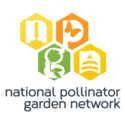You'll find reasonable arguments about the "decline" itself. Specifically the methodology for counting wild bees (the models used to extrapolate because data is scarce) and CCD (colony collapse disorder) falling well within normal ranges. Among a number of other things. And there are a number of fairly close co-incidental events on the timeline that may or may not be coincidences proper that both sides leverage in different ways. And then there's the question of a 1:1 relationship of those co-incidental events. 1:1 is beautiful - but also fairly rare.
I've spent a good bit of time looking at the arguments and data (and holes in the data) on both sides and my best conclusion is that, at this point, it might be an ideological/political/economic discussion rather than one based on good science on either side. And, probably, the best card to play is the "Precautionary Principle". And then so much of the data generated by industry falls into the "proprietary" category - so it's not available to look at.
Just my .02. Spend some time in the literature. Look at the raw data and the models made to extrapolate.
The nice thing about science done right is that it doesn't need to (nor should it) rely at all on "appeal to authority". All of the data and methods are there for honest researchers to replicate. Or should be.
A lot of people have a lot of economic skin in this game - on both sides. And when that happens, people tend to shade their views and analysis.
The good news is that most parties agree that population is stabilizing if not increasing now. The bad is that the "beepocalypse" may or may not have been real. And that science is more driven today by economics (who can afford to pay for a study that benefits them one way or another) than the pure quest for truth.
In other words, if the only grant available to finance my dissertation is one called "The Deleterious Effects of Chemicals on Worldwide Bee Population", (funded by the environmental action group ChemicalsAreAlwaysBad) you can be stinking sure that I'm going to find deleterious effects of chemicals on bee populations in order to complete my PhD. Or, the flipside funded by AmalgamatedChemical. There's not much money today for science (apart from agenda-driven research, which really doesn't fall into the category) for its own sake.
I got a little off topic. But I'm informed by many, many quotes much like the following. This is from Richard Horton, the editor in chief of the Lancet (which is a very prestigious medical journal in the UK):
The case against science is straightforward: much of the
scientific literature, perhaps half, may simply be untrue. Afflicted by studies with small sample sizes, tiny effects, invalid exploratory analyses, and flagrant conflicts of interest, together with an obsession for pursuing fashionable trends of dubious importance, science has taken a turn towards darkness.
(
http://www.thelancet.com/pdfs/...)
And there are many, many other sources in other disciplines saying the same thing.
Turns out to be a pretty difficult problem. I guess the best approach in 2017 is to ask: who paid for the research. (And why, if you can figure that out.) And then look at not only the data, but the collection methods as well as the models and methods used to interpret it.
I tried. And got left a little stumped on the subject in the Nature article. And even they ended up equivocating some, too. Realize that article was a synthesis and not a source doc.
I think the solution to all of this is to get all of the stakeholders together and design the study in advance - in a way that they can all agree on. Then collect the data. Then analyze the data. Then live by the conclusions. So much of the problem comes in twisted research designs in the first place. But if all parties were made to construct a mutually acceptable research design in the first place...
